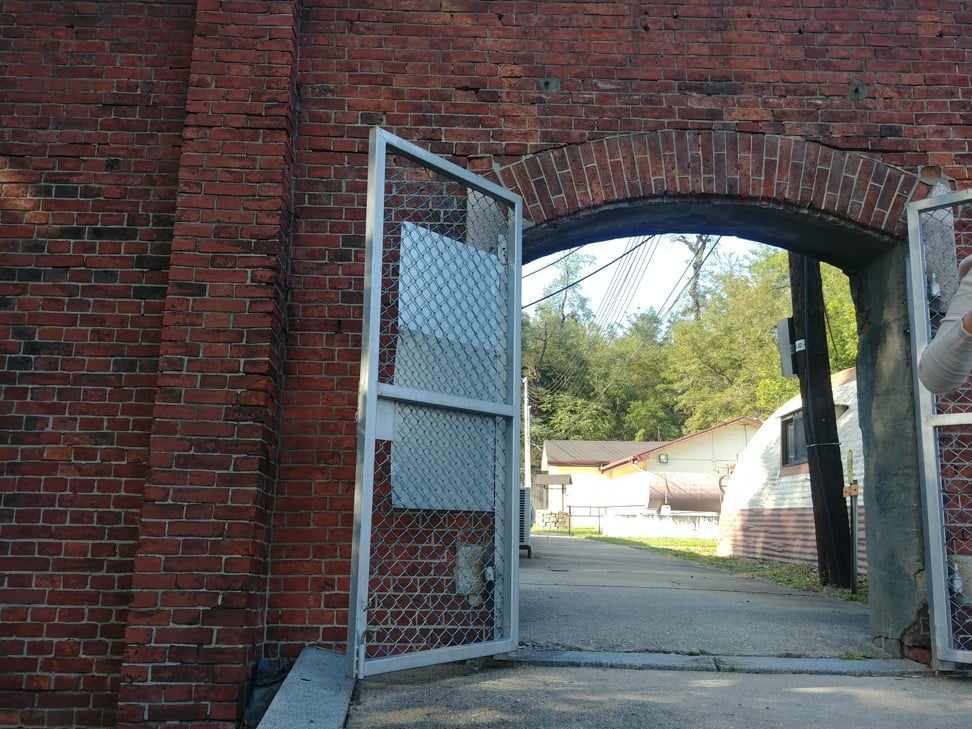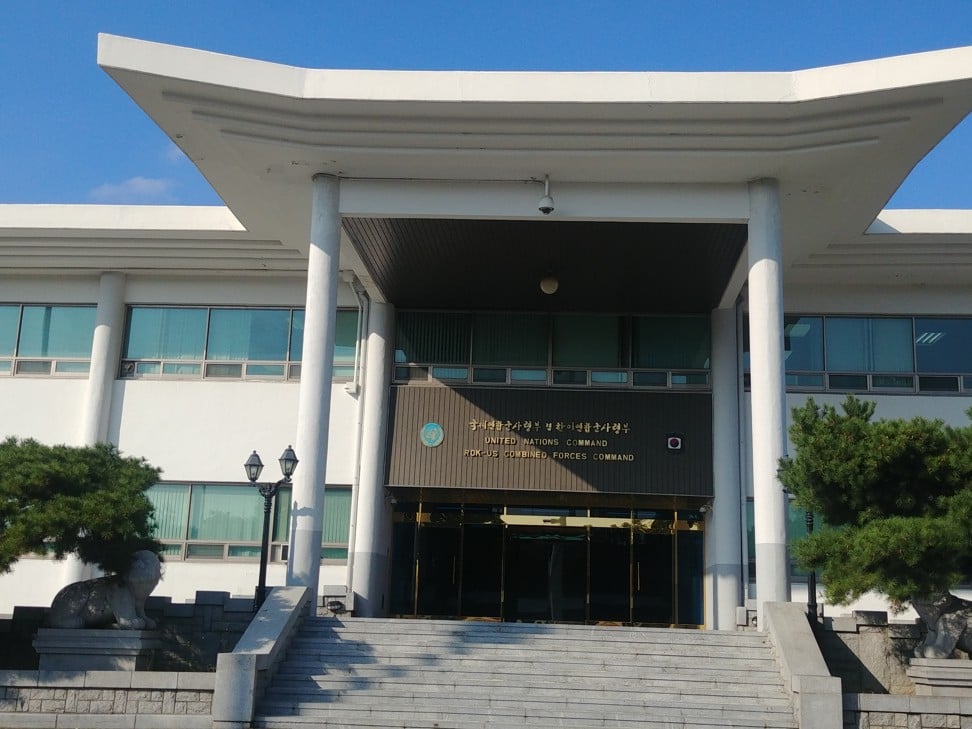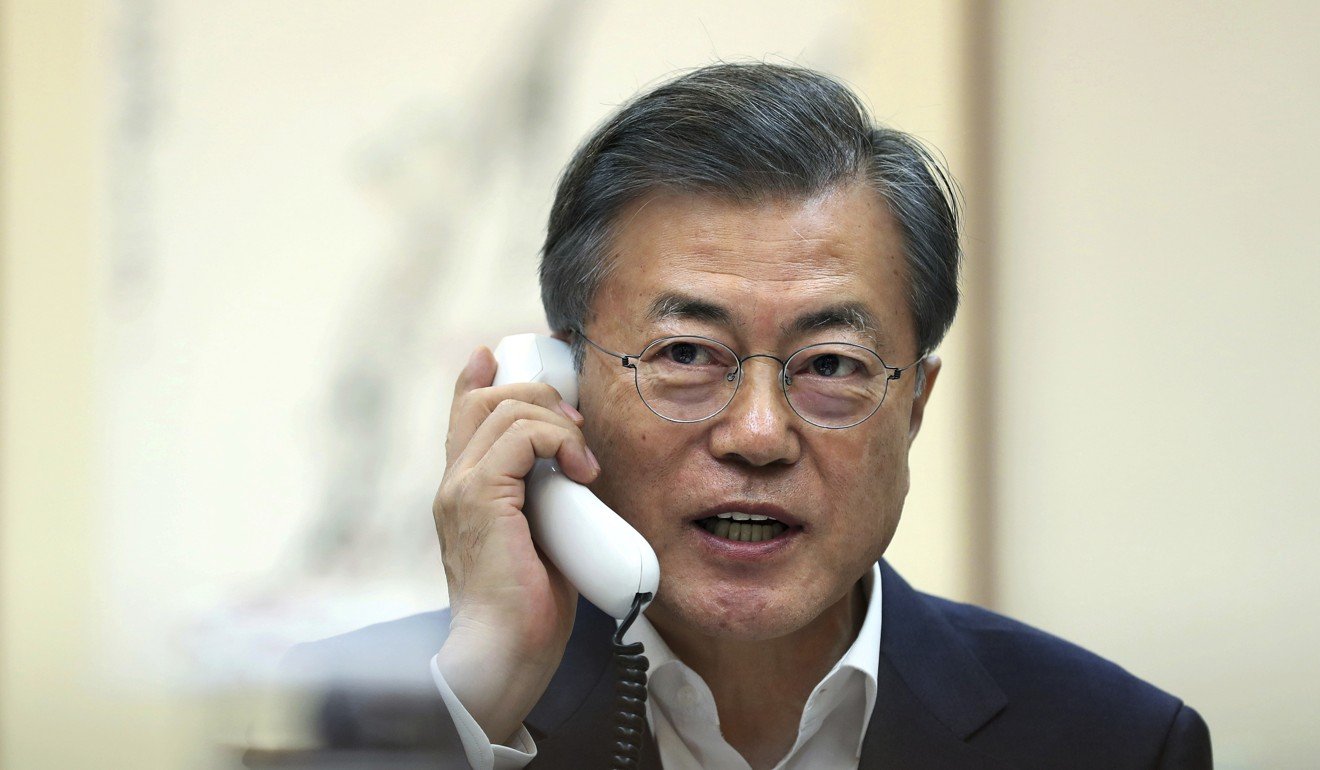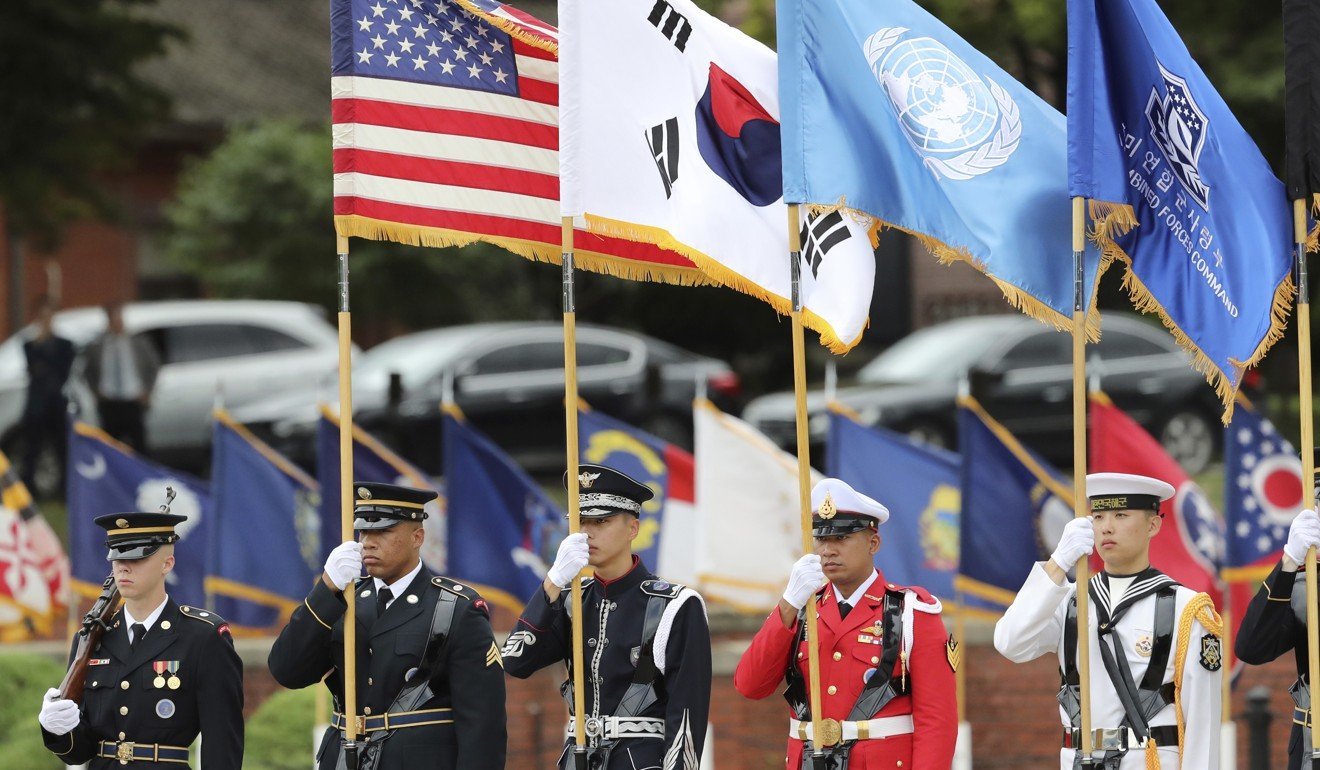
As US troops leave Seoul, a peek inside Korea’s Yongsan military base
- The Yongsan military base was manned first by the Chinese then the Japanese and finally the Americans
- As US troops move to Camp Humphreys, people are getting a glimpse inside

For more than a century, a massive parcel of land in the heart of Seoul has been occupied by foreign troops.
Separated from the rest of the world, behind high walls and barbed wire, the sprawling Yongsan military base has long been an eyesore for Seoul citizens and foreign visitors.
“In Beijing, you have the Great Wall but here at the centre of Seoul, we have this long wall of grey concrete blocks,” said Kim Hong-ryeol, a Seoul City government official, regarding the 13km boundary that surrounds the 2.4 sq km block.
The foreign occupation of Yongsan dates back to 1882, when Qing dynasty troops arrived from China to help end an uprising by soldiers armed with swords and spears who had been angered by the government’s policy of planning a Western-style force equipped with rifles. The Chinese pitched tents at Yongsan, which was then a mere farming village on the outskirts of Seoul.
These Chinese troops withdrew but returned in 1894 to help quell a farmers’ uprising, leading to a war with Japan over the control of Korea. China lost this war, damaging its centuries-old influence over the country and paving the way for a period of colonial rule under the Japanese from 1910-45.
After the end of World War Two in 1945, American troops took over the base, and have stayed ever since.

South Korea still hosts 28,500 US soldiers to help deter threats from nuclear-armed North Korea. But Yongsan – the centre of US might in the country – has also been a source of embarrassment for South Korea, the only country in the world with foreign forces stationed in its capital.
North Korea often targets Yongsan for propaganda campaigns accusing the South of being, in effect, a colony of American imperialists.
PRIME REAL ESTATE
Initially farmland on the outskirts of the capital, Yongsan after the end of the Korean war in 1953 became surrounded by Seoul’s sprawling metropolitan areas – eventually becoming coveted real estate.
Indeed, South Koreans have always been eager to regain control of the site, but the first proposal to relocate the military base away from Seoul came in 1990 from an unexpected figure – Roh Tae-woo, a conservative, pro-US general who became president.

After years of negotiations, the US and South Korea agreed in 2003 to consolidate the American military presence to two regional hubs: Pyeongtaek in the central part of South Korea and Daegu in the south.
But it took another 14 years after the 2003 agreement for the relocation of Yongsan garrison to Camp Humphreys at the seaport of Pyeongtaek, 60km south of Seoul, to begin in earnest, largely due to delays in preparing the new site for thousands of American soldiers and their families.
“Since the relocation proposal was made in 1990, we have seen six [South Korean] presidents come and go amid a lot of delays in the project,” Kim Hong-ryeol said.

TOURING YONGSAN
Apparently irritated at the delays, current President Moon Jae-in last year told government authorities to do something to let the people know progress was being made.
As a result, Seoul officials persuaded reluctant American military authorities to grant selected groups of South Koreans limited bus tours through the Yongsan garrison, which is still strictly off-limits to unauthorised people.

When the tours started in November last year, one busload of only 35 people was given access to the site per week. The tours have since been doubled to two busloads per week.
Visitors board the buses at Camp Kim, a US military facility for travelling soldiers near Yongsan garrison, and leave the bus occasionally to stroll around, albeit led by guides.
“This is [more] like a self-contained village than a military base,” tour guide Um Jin-hee said of the compound.
This was at the centre of the whirlwind of history, and witnessed numerous wars and the suffering of Koreans
The garrison consists of two main parts – Main Post (North Post) and South Post – divided by Itaewon-ro, a four-lane boulevard. In 2003, a two-lane overpass was constructed over the boulevard to ease traffic congestion.
Looking through the bus windows, visitors can see the dark-coloured brick buildings originally constructed by Japanese forces, as well as family housing areas, schools, a giant commissary, a post office, restaurants and sporting facilities.
In the southern precinct the South Post Bunker, originally the Japanese army’s command post, stands next to the site of the former Japanese army headquarters, burned down during the Korean war.

The tour passes former Japanese barracks and an ex-military prison with a 4.9-metre-high perimeter red brick wall, reinforced with wire-frame cement. Bullet holes and other damage from the Korean war remain clearly visible.
Then there’s the yellow, two-storey, palazzo-style quarters built in 1908 for Japanese bachelor officers. It has since been used by USMAG-K (Joint US military affairs group-Korea), which oversees the two allies’ military exchanges.
The white, modern building to house the US-South Korea Combined Forces Command, formed in 1978 to tighten alliances against military threats from North Korea, stands out from the rest.

MOVING TO CAMP HUMPHREYS
South Korea and the US have been pushing to complete the total relocation of their Combined Forces Command headquarters out of Seoul by 2021. By 2022, Camp Humphreys is expected to house nearly 45,000 people, including soldiers, contractors, and family members, who have long considered Yongsan a home away from home.
To date, Yongsan’s population has dropped from more than 25,000 to about 4,000. Its last major unit is set to move in the near future after a new hospital at Camp Humphreys opens in a few months, allowing the medical facility in Yongsan to close.

The tree-lined Yongsan garrison site, which contrasts with the bustling cement metropolis, will be transformed into a public park similar to New York’s Central Park.
South Korea paid US$10.8 billion to build the massive new US garrison in Pyeongtaek, billed as America’s largest overseas military base, occupying 15 sq km. When the land is returned, the US will have given back 178 sq km by consolidating more than 91 bases throughout the country into the two regional hubs of Pyeongtaek and Daegu.

The massive relocation marks the virtual end of the US military’s 70-year presence in the South Korean capital.
“I have mixed feelings. We were unable to enter this forbidden place for more than 100 years even though it is part of our land,” said Lee Seong-nam, a 59-year-old businessman who was among the tour group.
“I feel sad standing on this place. This was at the centre of the whirlwind of history, and witnessed numerous wars and the suffering of Koreans at the hands of foreign invaders. At the same time I am happy as this place is being turned into a public park at last.”